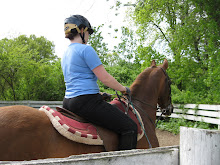Criticisms of the term Native American come from diverse sources. Many American Indians have misgivings about the term Native American. Russell Means, an American Indian activist, opposes the term Native American because he believes it was imposed on the Indians by the government without consent. He has also argued that this use of the word Indian derives not from a confusion with India but from the Spanish expression "En Dio," meaning "in God". Some American Indians question the term Native American because they argue that it serves to ease the conscience of "white America"* with regard to past injustices done to American Indians by effectively eliminating "Indians" from the present. Both Indians and non-Indians argue that the term Native American is problematic because "native of" literally means "born in," so any person born in the Americas could be considered "native". However, very often the compound "Native American" will be capitalized in order to differentiate the intended meaning from others. Likewise, "native" can be further qualified by formulations such as "native-born" when the intended meaning is only to indicate place of birth or origin.
A 1995 US Census Bureau survey found that more Native Americans in the United States preferred American Indian to Native American. Nonetheless, most American Indians are comfortable with Indian, American Indian, Amerindian and Native American, and the terms are often used interchangeably. The traditional term is reflected in the name chosen for the National Museum of the American Indian, which opened in 2004 on the Mall in Washington, D.C.
Why classify people, and then worry about offending them? If only people would think before speaking.
Sources:
Jack Larkin (2003). "OSV Documents- Historical Background on People of Color in Rural New England in the Early 19th Century." Old Sturbridge Inc. http://www.osv.org/explore_learn/document_viewer.php?DocID=2044. Retrieved 2010-3-21.
"I am an American Indian, Not a Native American!". Russell Means. http://www.peaknet.net/~aardvark/means.html. Retrieved March 21, 2010.
"What's in a Name? Indians and Political Correctness." All Things Cherokee. http://www.allthingscherokee.com/atc_sub_culture_feat_events_070101.html. Retrieved March 21, 2010.
"American Indian versus Native American." Infoplease. http://www.infoplease.com/spot/aihmterms.html. Retrieved March 21, 2010.
